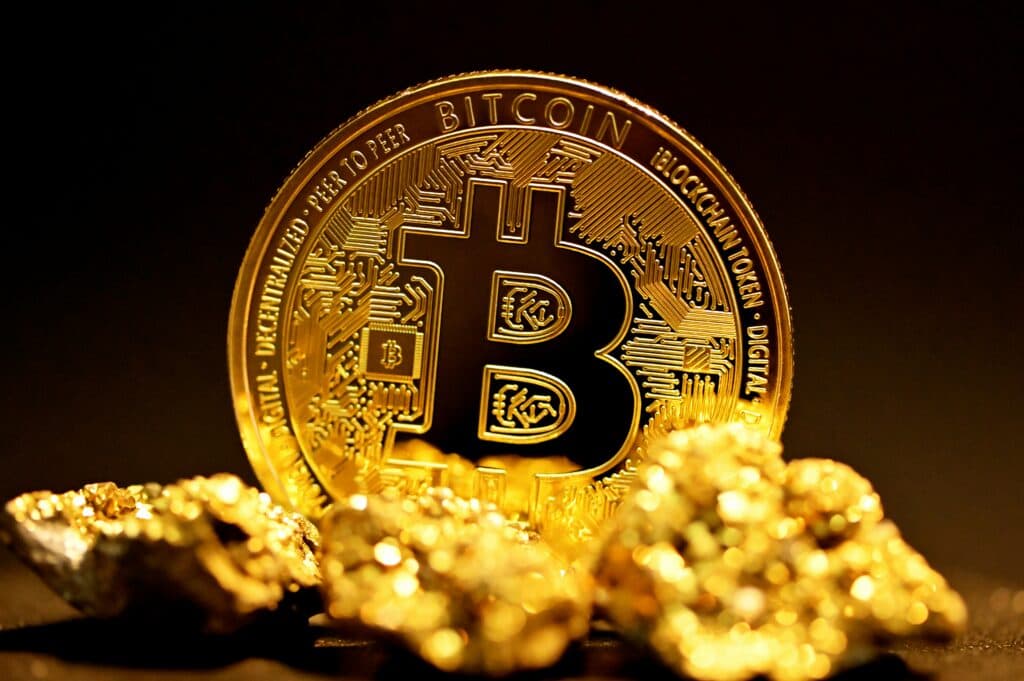Bitcoin Basics Series — Part 2
Picture This…
Imagine if tomorrow, scientists discovered a way to double the world’s gold supply overnight.
What would happen?
Gold’s value would tank, that’s what.
Why?
Because what makes gold valuable isn’t just that it’s shiny or durable — it’s that it’s rare.
Now, here’s the kicker:
Governments and central banks do this to your money all the time. They just create more dollars, euros, pesos, or yen whenever they decide to.
And every new unit they add quietly chips away at the value of the money already in your wallet.
Bitcoin is different. Radically different.
The 21 Million Cap
Here’s one of the most important things you’ll ever understand about Bitcoin: There will only ever be 21 million of them.
Ever.
Not a marketing gimmick. Not a politician’s campaign promise. Not a company’s sales pitch.
It’s hard-coded into the protocol — enforced by tens of thousands of computers worldwide that all agree on the same rules.
Nobody can change it, not even the world’s most powerful government.
That fixed limit is what makes Bitcoin scarce in a way no government-issued money has ever been.
Why Scarcity Matters
Scarcity is what gives things value.
- Gold is scarce, so people value it.
- Beachfront property is scarce, so people pay a premium for it.
- Baseball cards, vintage cars, and fine art — all valuable largely because they’re rare.
Now, think about dollars. They aren’t scarce.
In fact, more of them are created every day. And the more there are, the less each one is worth.
That’s why prices go up over time — not because your groceries got more delicious or your car suddenly got better, but because the purchasing power of your money is eroding.
Bitcoin flips that script.
It’s digital scarcity — the first time humanity has had a form of money that’s both scarce and perfectly portable, divisible, and durable.
Divisibility: You Don’t Need a Whole Bitcoin
Here’s a common misconception:
“I can’t afford Bitcoin. It’s too expensive. I missed the boat.”
Let’s clear that up right now.
Each Bitcoin can be divided into 100 million smaller units called satoshis (or “sats” for short).
That means you don’t have to buy a full Bitcoin.
You can buy $10 worth, or $100 worth, or whatever you want.
Think of it like a pizza. You don’t need to order the whole pie if you just want a slice.
Bitcoin works the same way — it’s just money, divisible into as many slices as you need.
The Halving: Built-In Discipline
Here’s where Bitcoin gets even more interesting…
Not only is the total supply capped at 21 million, but the pace of new Bitcoin creation slows down on a strict schedule.
Roughly every four years, the reward for bringing new Bitcoin into existence gets cut in half.
This is called the “halving.”
Now, quick sidebar: That reward goes to the people called miners.
The term can be confusing — they aren’t swinging pickaxes underground. But the metaphor stuck because, like gold miners, they’re doing the work required to discover and release new supply.
In Bitcoin’s case, it’s computers running powerful calculations that secure the network and, in return, earn freshly issued Bitcoin.
A deep dive on mining is outside the scope of today’s article, but don’t worry — I’ll cover it in plain English in a future piece for those curious.
Back to the halving…
Imagine if gold miners woke up one morning and discovered that, starting today, their daily haul of gold was slashed by 50% — and that they could see every future cut for the next 100 years laid out in advance.
That’s what happens with Bitcoin.
This built-in discipline is the exact opposite of the unpredictable printing that happens with fiat currencies.
Everyone knows the schedule. Everyone can plan for it. And no one can change it.
Why This Changes the Game
For the first time in history, the supply of money isn’t controlled by humans with short-term incentives. It’s controlled by math and code.
That means you don’t have to trust politicians, central bankers, or CEOs to “do the right thing.”
You can trust the rules themselves — rules that can’t be bent.
Scarcity is a big deal. When something is limited and demand grows, value follows.
That’s why Bitcoin’s 21 million cap is not just a quirky feature. It’s the very foundation of why this network works, why it’s valuable, and why it matters.
The Takeaway
Bitcoin’s 21 million cap makes it the scarcest asset humanity has ever known. That scarcity is real, predictable, and unchangeable.
You don’t need to own a whole Bitcoin to benefit from that scarcity.
Start with a slice. Buy a few dollars’ worth of sats and see for yourself.
It’s not about timing the market. It’s about owning a piece of something that can’t be inflated, duplicated, or erased.
What’s Ahead in This Series
This is just the beginning of the journey…
- In Part 1, we unpacked what Bitcoin is — and why it’s not just “internet money.”
- Today, we saw how its scarcity makes it unique in human history.
But here’s a question I hear all the time: “Okay, but isn’t Bitcoin just another ‘crypto’? What makes it different from all those other coins and tokens I keep hearing about?”
Some people even compare Bitcoin to Netscape or AOL — pioneers that opened the door but were later replaced by “better” technology.
Nothing could be further from the truth. And in the next part of this series, we’ll unpack exactly why Bitcoin stands alone, and why no other so-called crypto comes close.
👉 Coming up in Part 3: “Bitcoin vs. Crypto: Why One Stands Alone.”
